Grape Cultivar Developmental Stages: July 21, 2021
Phenology
As of July 20 at the West Madison Agricultural Research Station (WMARS) in Verona, WI, the cultivar Itasca has reached veraison (E-L* Stage 35), meaning that the berries have begun to change color and softening continues. In a white grape cultivar like Itasca, the berries begin to change from green to a more golden hue. The berries of Marquette and some Frontenac clusters have begun to soften (E-L Stage 34), while those of Brianna, La Crescent, Petite Pearl, and Crimson Pearl are still hard and green (E-L Stage 33). One of the WMARS vineyards is experiencing a notable incidence of powdery mildew, evident in the pictures of Brianna and La Crescent below.
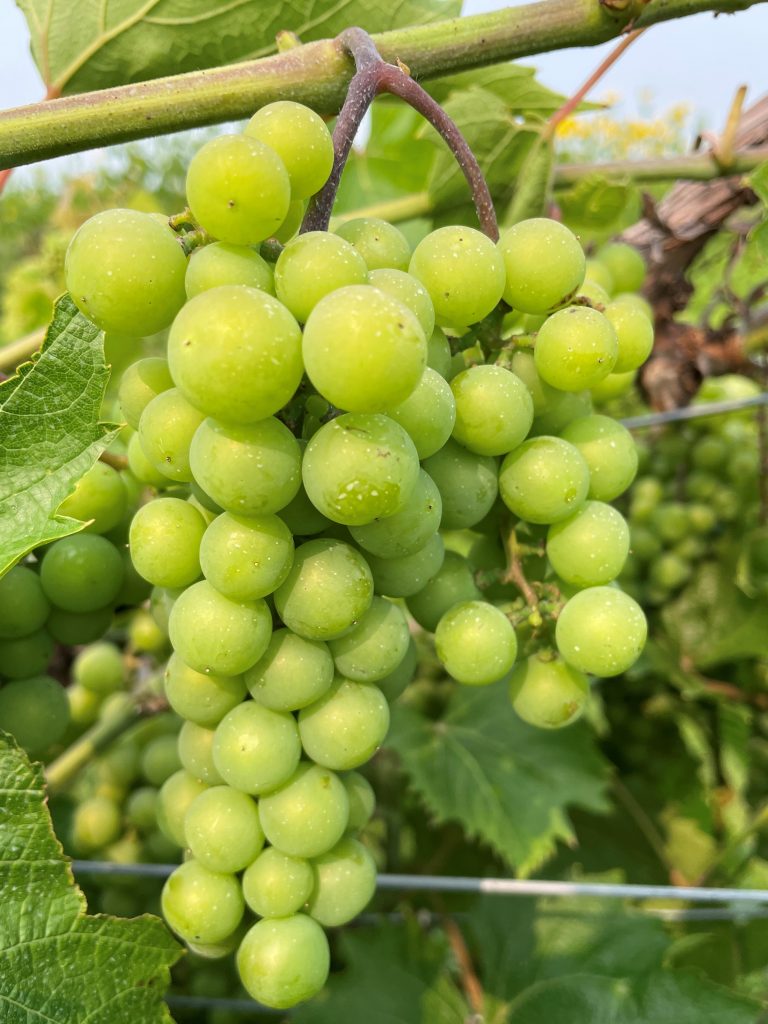
Petite Pearl 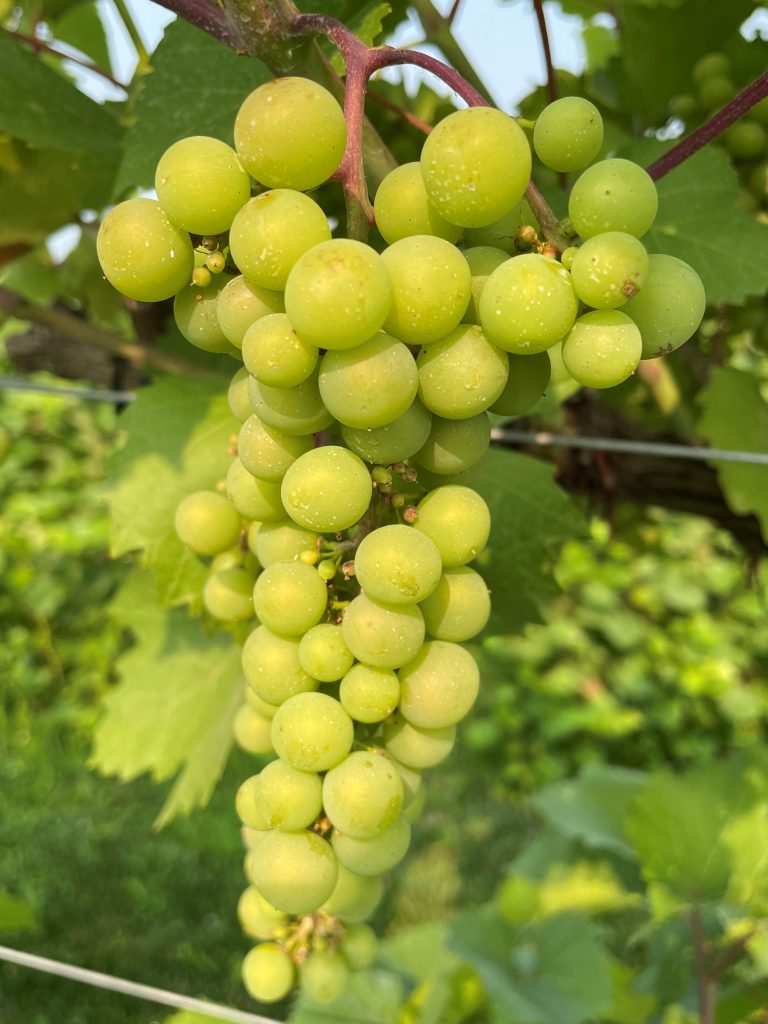
Marquette 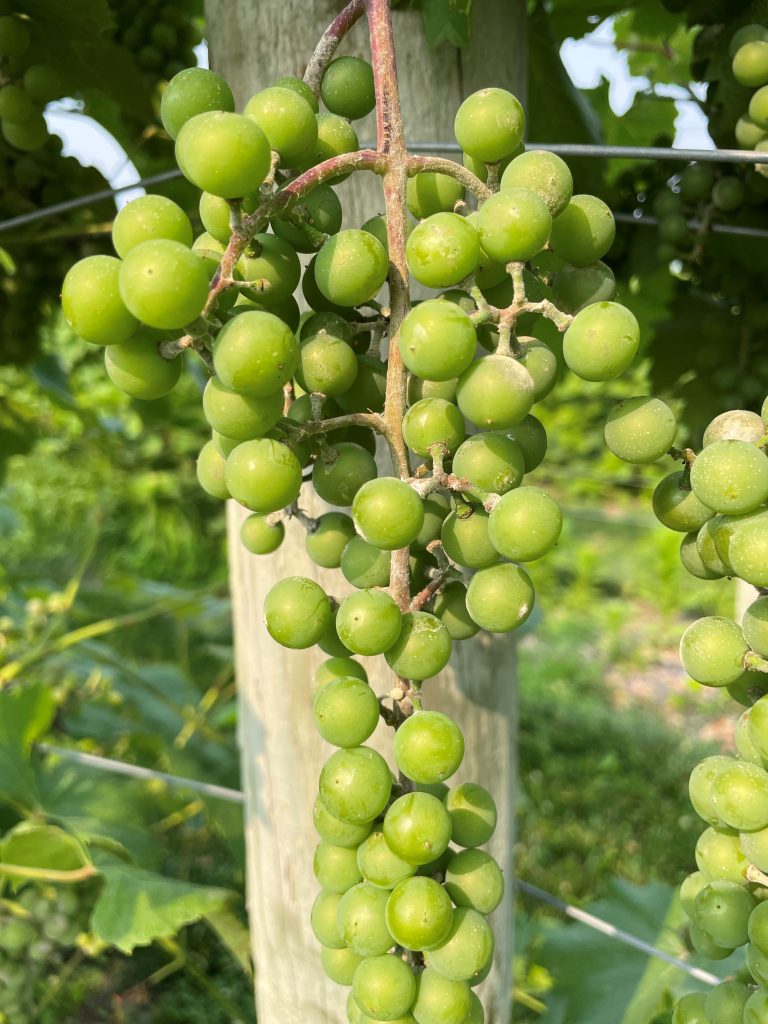
La Crescent 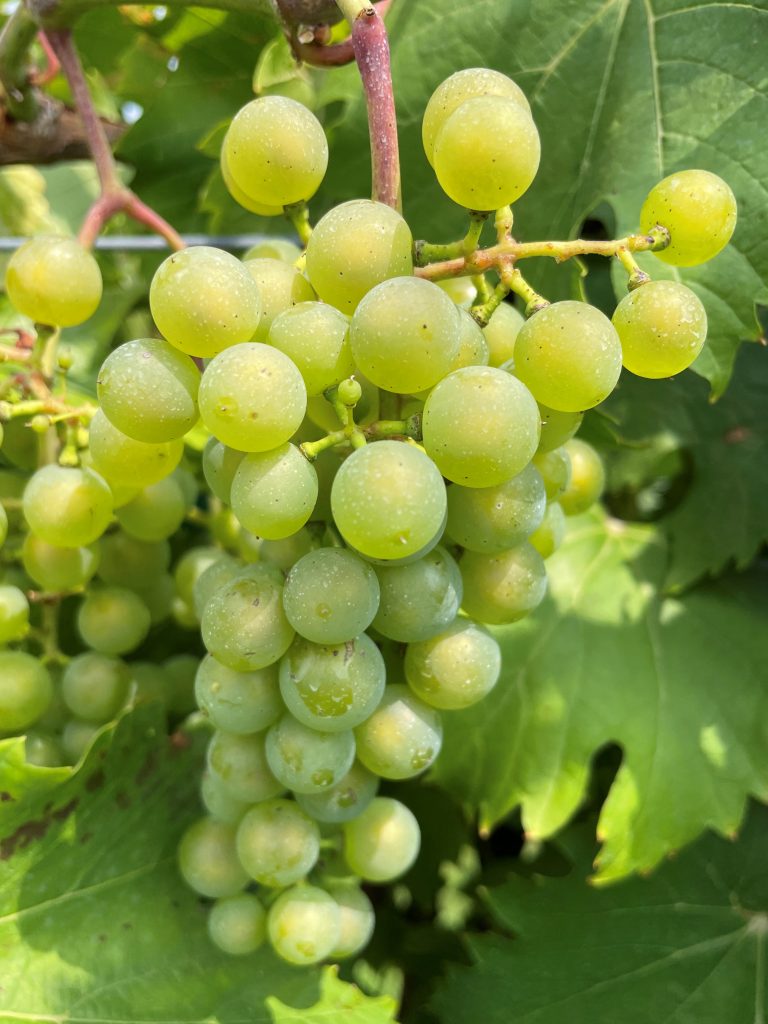
Itasca 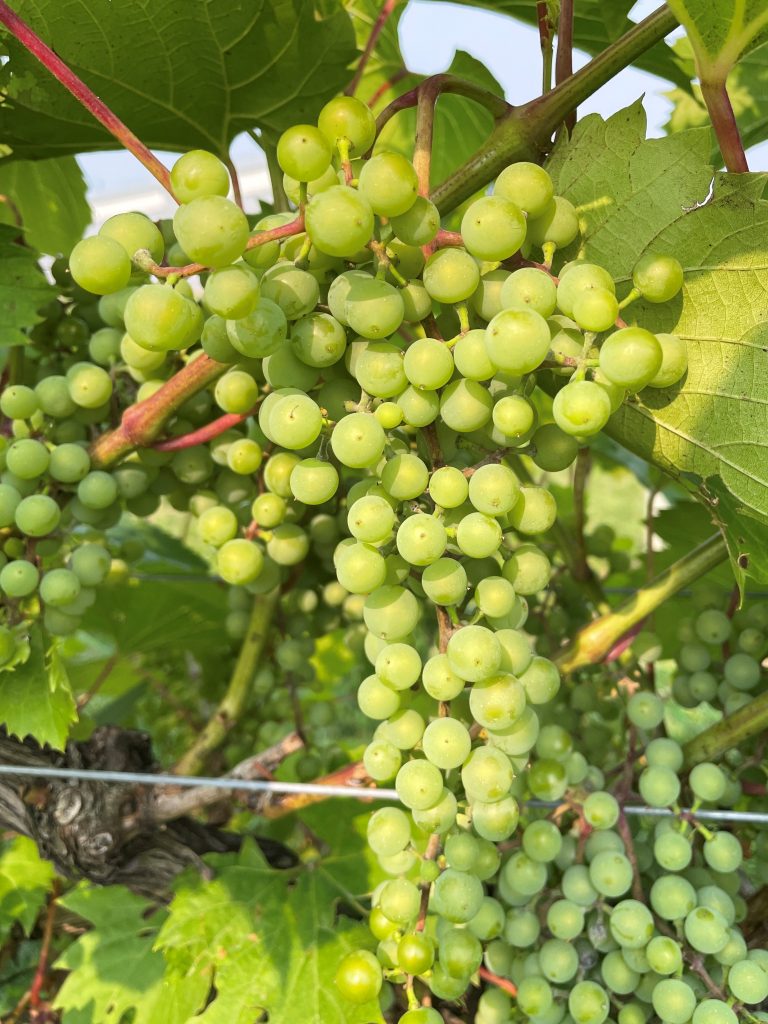
Frontenac 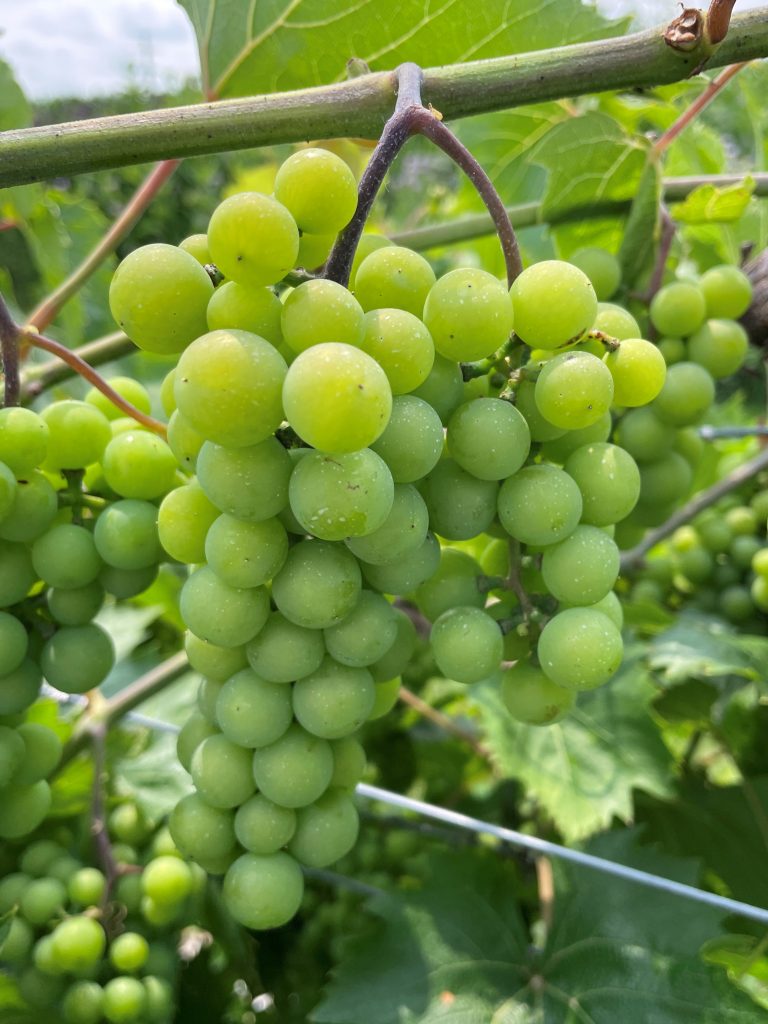
Crimson Pearl 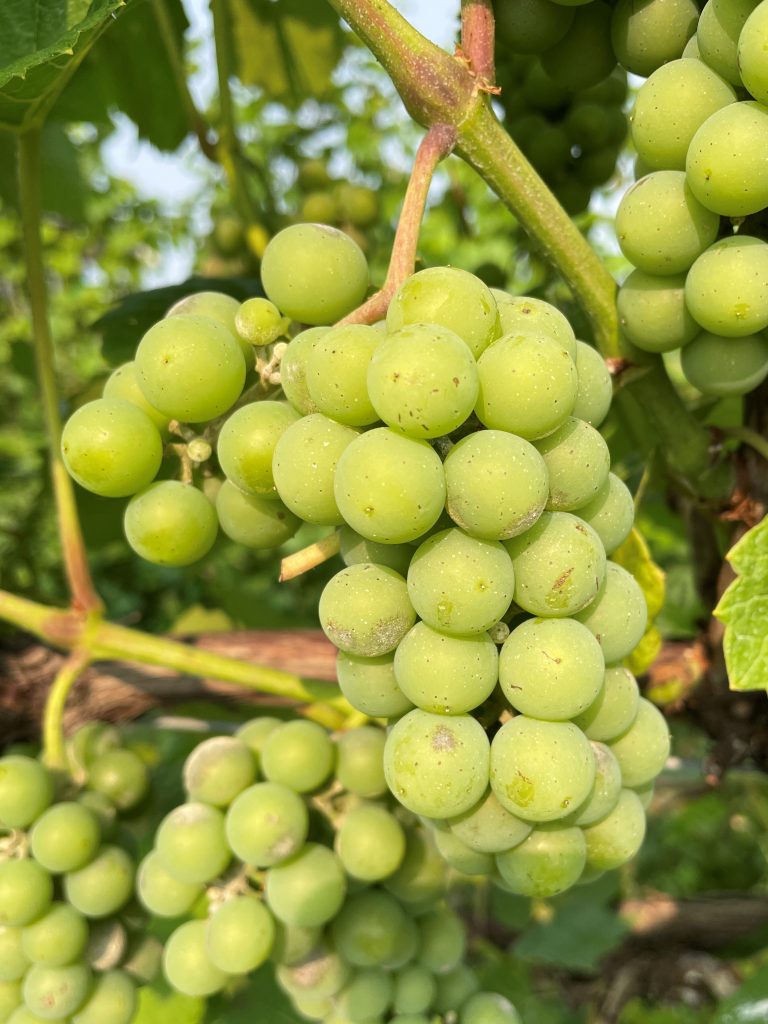
Brianna
*E-L stands for the Eichhorn-Lorenz growth stages scale to describe grapevine development.
Berry Ripening Parameters
With the warm temperatures predicted for the coming week, we expect the remaining cultivars to reach veraison soon. Starting with the next WFN, we will report the date of veraison for each cultivar and the current soluble sugars and titratable acidity (TA) concentrations, until harvest.
Figure 1. E-L growth stages of grape cultivars at the West Madison Agricultural Research Station, as of July 20.
Growing Degree-Day (GDD) Accumulations
Depicted in Figure 2 and listed in Table 1 are the GDD accumulations from April 1 to July 20 for this year and the past two seasons. Degree-days were calculated using a base 50 °F, starting on April 1 as a biofix date. We use the NEWA website and the “BE” (Baskerville-Emin) calculation. This method uses a sine wave instead of a simple average temperature calculation, which is thought to provide a more accurate estimation of degree-days. You can visit the NEWA “About degree days” page to learn more about the concept of degree days and the formulas used in calculations. (http://newa.cornell.edu/index.php?page=about-degree-days).
At both WMARS and PARS GDD accumulation slowed over the past two weeks, but the total accumulations are still greater this season than for either 2020 or 2019. The current GDD accumulation as of July 20 at PARS (1079 GDDs) is approximately three weeks behind that of WMARS.
Table 1. Growing degree day accumulation as of July 20, 2021 (April 1 biofix date; base 50 °F BE*) at the West Madison Agricultural Research Station (WMARS) and the Peninsular Agricultural Research Station (PARS).
| Location | 2021 | 2020 | 2019 |
| WMARS | 1499 | 1412 | 1326 |
| PARS | 1079 | 1040 | 853 |
*BE = Baskerville-Emin calculation method
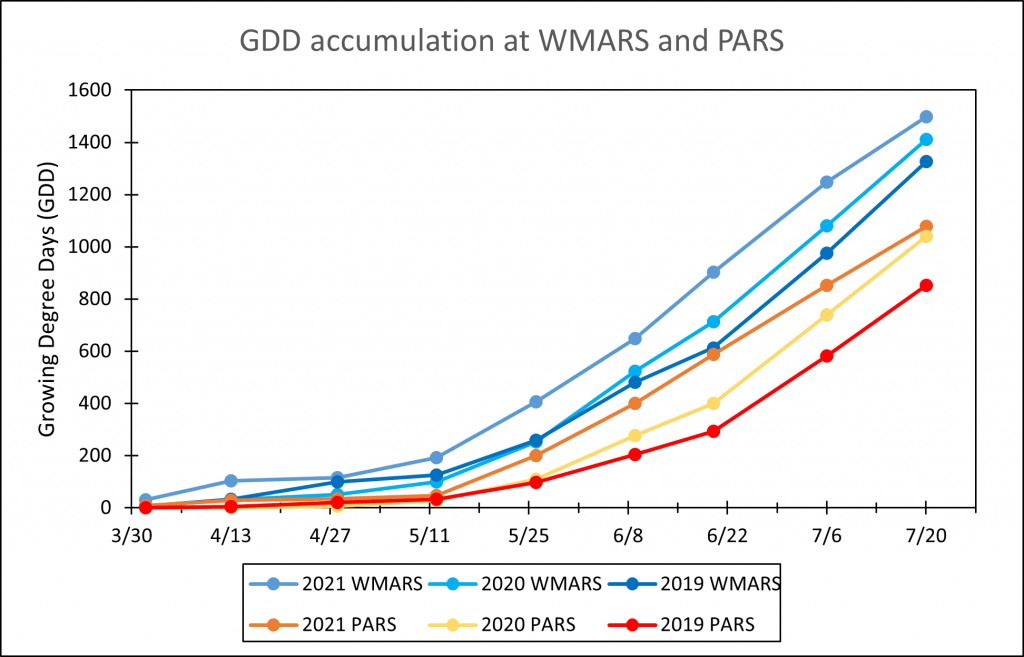
Figure 2. Accumulation of growing degree days (GDD) as of July 20 (April 1 biofix date) at both the West Madison Agricultural Research Station (WMARS) and the Peninsular Agricultural Research Station (PARS) for 2019, 2020 and 2021.
This article was posted in Grapes and tagged Amaya Atucha, Beth Ann Workmaster, grape phenology, Grapes, grapes developmental stages, Jarret Miles-Kroening.
